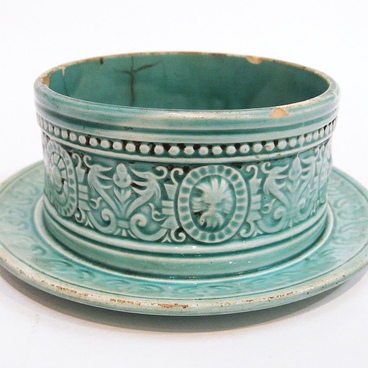Originally, coffee beans were brewed whole without being ground first. The pestle and mortar in which the Bedouins ground coffee beans are considered to be the ancestor of the coffee grinder. This method was not very productive and required significant physical effort, so only Arabian men who had received special training were involved in it.
The first manual coffee grinder was invented in the 15th century. It was a hollow cylinder, usually wooden, into which whole grains were poured. Inside it were two millstones, between which coffee beans were ground. The millstones were set in motion by rotating a handle attached to the top of the cylinder.
In the middle of the 17th century, the first Turkish coffee grinders appeared. They also had a cylindrical shape that made it easy to hold the mill in your hand. The folding handle could be removed into the body. It also served as a wrench, with which you could change the distance between the millstones and disassemble the grinder for cleaning.
Building on Turkish coffee grinders, European variants appeared. They were usually in the shape of a cube with a small pull-out drawer into which the ground coffee was poured after it left the millstones. To load coffee beans, a special funnel was used, which could be of two types - closed and open. In a closed funnel, coffee oxidized less and retained its aroma longer.
Two millstones were placed inside the coffee grinder, which can be brought closer to each other using a special screw. The closer the grindstones, the finer the grind of coffee. The smaller the distance between the millstones, the finer the grinding of the grains is. Millstones were made from different materials, based on their properties - metal ones differed in strength and durability, ceramic ones heated less during grinding, and did not enter into chemical reactions and retained the taste of coffee better. The cube shape that European coffee grinders had was not very convenient, since you had to hold the fixed part with one hand. Sometimes these grinders were secured with a clamp, or clip, to a fixed surface.
On an industrial scale, coffee grinders began to be produced only in the 19th century. The first factory for the production of coffee grinders was owned by the Peugeot brothers in France.
The first manual coffee grinder was invented in the 15th century. It was a hollow cylinder, usually wooden, into which whole grains were poured. Inside it were two millstones, between which coffee beans were ground. The millstones were set in motion by rotating a handle attached to the top of the cylinder.
In the middle of the 17th century, the first Turkish coffee grinders appeared. They also had a cylindrical shape that made it easy to hold the mill in your hand. The folding handle could be removed into the body. It also served as a wrench, with which you could change the distance between the millstones and disassemble the grinder for cleaning.
Building on Turkish coffee grinders, European variants appeared. They were usually in the shape of a cube with a small pull-out drawer into which the ground coffee was poured after it left the millstones. To load coffee beans, a special funnel was used, which could be of two types - closed and open. In a closed funnel, coffee oxidized less and retained its aroma longer.
Two millstones were placed inside the coffee grinder, which can be brought closer to each other using a special screw. The closer the grindstones, the finer the grind of coffee. The smaller the distance between the millstones, the finer the grinding of the grains is. Millstones were made from different materials, based on their properties - metal ones differed in strength and durability, ceramic ones heated less during grinding, and did not enter into chemical reactions and retained the taste of coffee better. The cube shape that European coffee grinders had was not very convenient, since you had to hold the fixed part with one hand. Sometimes these grinders were secured with a clamp, or clip, to a fixed surface.
On an industrial scale, coffee grinders began to be produced only in the 19th century. The first factory for the production of coffee grinders was owned by the Peugeot brothers in France.

